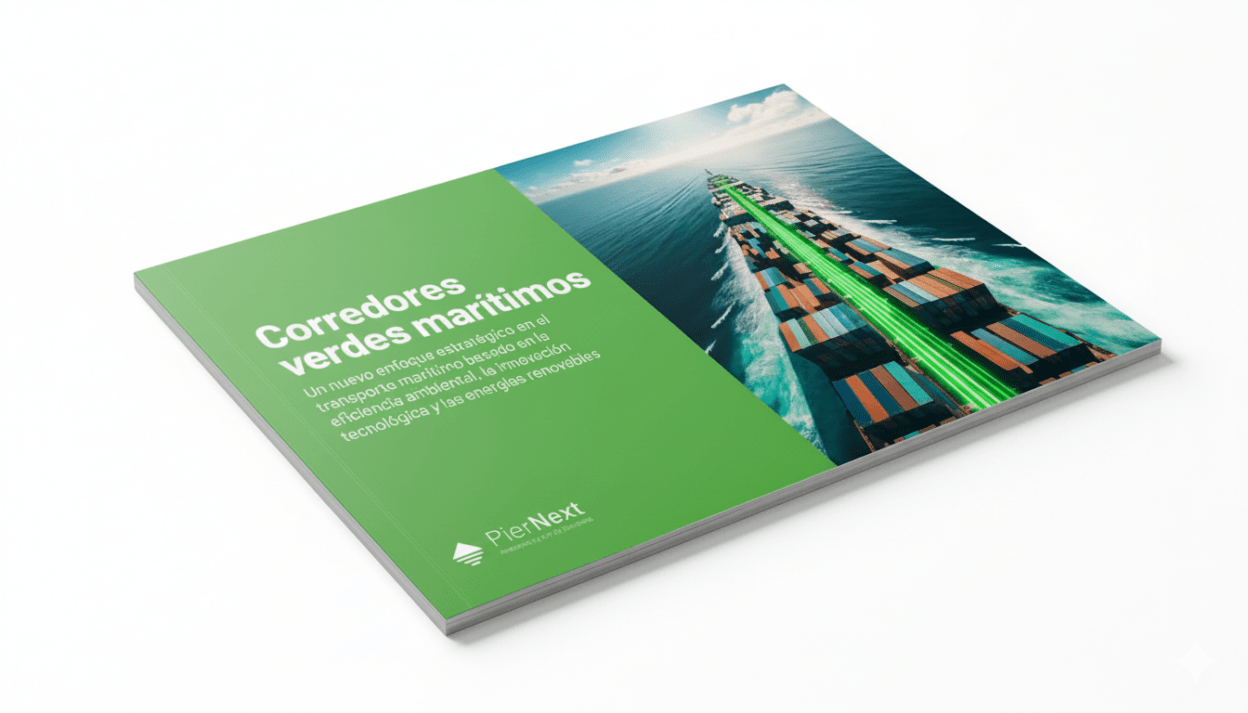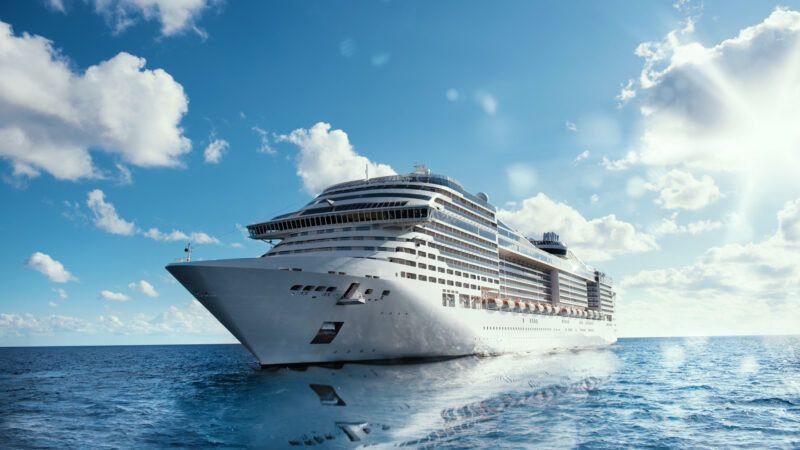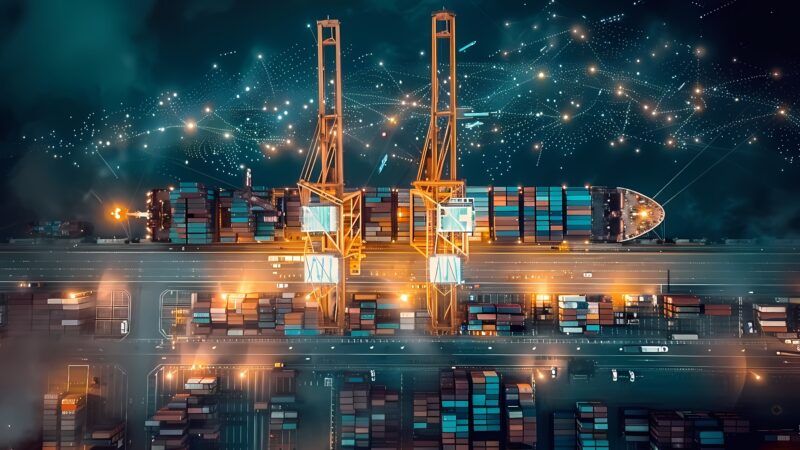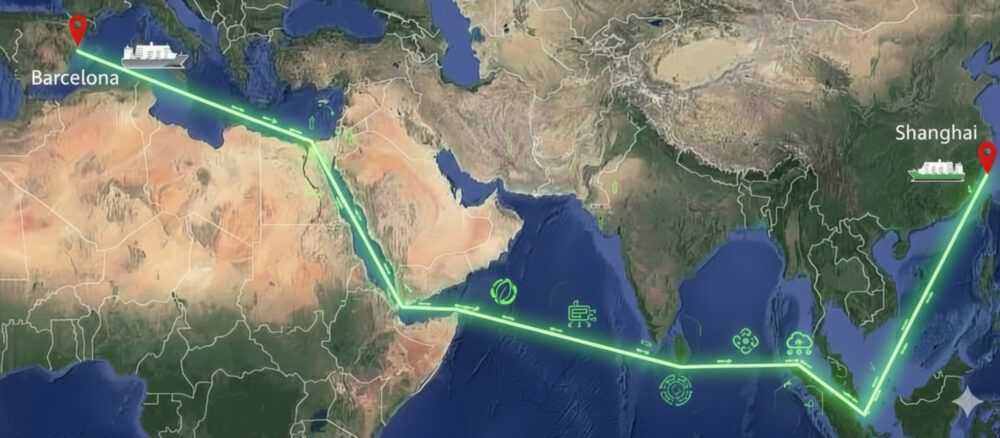
Green shipping corridor Barcelona-Shanghai: an example of projects that will transform maritime transport
The Port of Barcelona and the Port of Shanghai have agreed to create a maritime route with neutral emissions, focused on energy efficiency, digitalization, and the transport of vehicles with green methanol. They join a long list of similar initiatives worldwide: up to 57 green maritime corridors have been proposed by early this year.

The Port of Barcelona and the Port of Shanghai have agreed to create a maritime route with neutral emissions, focused on energy efficiency, digitalization, and the transport of vehicles with green methanol. They join a long list of similar initiatives worldwide.
From 2023 to 2024, for example, the number of global initiatives for these projects practically doubled, according to the Annual Progress Report on Green Shipping Corridors 2024. Many green corridor projects stand out for seeking a sustainable path for fuel and for using digital tools to optimize routes and operations.
Barcelona and Shanghai will be no exception.
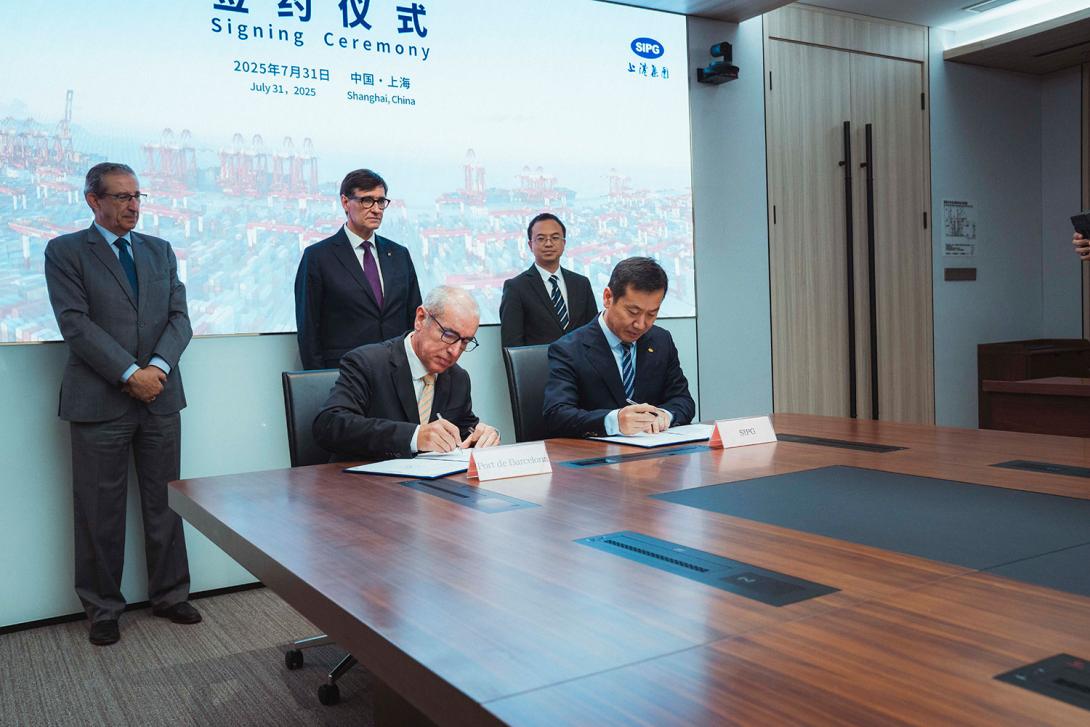
Barcelona-Shanghai: emissions reduction and digitalization
This strategic green shipping corridor has the challenge of drastically reducing emissions from maritime transport between Barcelona and Shanghai, a project that will be possible thanks to the agreement formalized by the Port of Barcelona and Shanghai to promote the digitalization of logistics processes.
This is the second project of its kind in Europe, after the ongoing development of the corridor between Rotterdam and Singapore, one of the longest and most commercially important routes, with high container traffic.
- A strategic agreement
The agreement signed between the presidents of both ports, José Alberto Carbonell and Song Xiadong, establishes collaboration between port authorities, shipping companies, and fuel producers to create a decarbonized and efficient logistics ecosystem.
Green shipping corridors are in full expansion. From 2023 to 2024, the number of global initiatives for these projects practically doubled. And they are important because, among other advantages, they allow for the reduction of direct and indirect emissions.
- An alliance based on consolidated commercial relations
Currently, Shanghai is the largest port in the world. 50% of imports arriving at the Port of Barcelona—in sectors such as electronics, machinery, textiles, and consumer goods—come from China, especially from this port city. Therefore, given this framework, establishing a green corridor is not only viable but also a 100% coherent strategy with current commercial reality.
- Chery: first corridor operator
One of the first companies that will operate in this new corridor is the automotive multinational Chery, which exports 80% of the cars it manufactures through the Port of Barcelona. From the Catalan city, they are distributed to Spain and Portugal. This cargo will be carried out, according to this new agreement, with energies considered neutral in emissions. And it will be done this way from its origin to its final destination.
What is a green shipping corridor and why is it important?
A green shipping corridor is a maritime route between ports that promotes sustainable practices to reduce the environmental impact of maritime transport. It involves the use of clean fuels, innovative technologies, and digitalization to minimize greenhouse gas emissions.
- The urgency of green corridors
The maritime sector represents more than 80% of global freight transport and contributes around 3% of global greenhouse gas emissions. Green corridors are essential to curb climate change and meet the objectives of the Paris Agreement for 2050.
- Key components of a green corridor
They promote the use of vessels with clean technologies and efficient engines, and must have eco-efficient infrastructure—that is, ports with waste management systems and renewable energies that implement actions to protect biodiversity and ecosystems. Thanks to digitalization, participating ports can also optimize routes and fleet management.
- The origin of the global initiative
The Clydebank Declaration, signed by more than 20 countries at COP26 in October 2021, drove the creation of green maritime corridors. From 2023 to 2024, global initiatives almost doubled, according to the Annual Progress Report on Green Shipping Corridors 2024.
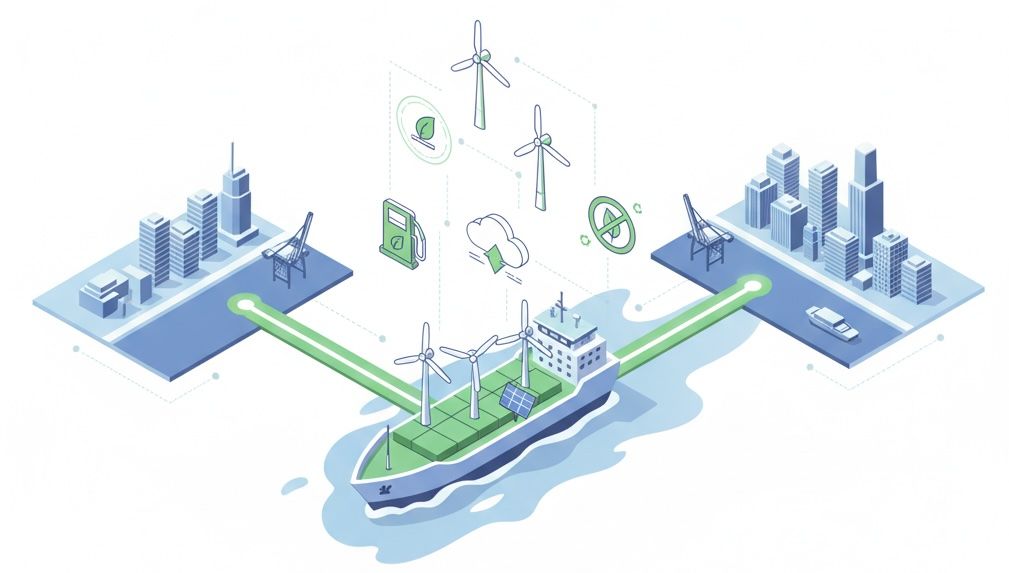
The logistics of the future: decarbonized and digital
According to Maurici Hervas, researcher in energy transition at the Port of Barcelona, who spoke to PierNext, the agreement with the Chinese port "greatly facilitates both internal collaboration and the incorporation of new actors such as shipping companies, terminals, fuel producers, and bunkering services."
He notes that the agreement also "opens a direct dialogue channel with colleagues at the Port of Shanghai to share experiences and strategies to improve the sustainability of cruise activity and the use of digitalization to reduce externalities."
- Flexible implementation calendar
Hervas also highlights that there is no fixed calendar, as implementation will depend on multiple factors and actors, such as cargo owners, maritime transport companies, and fuel producers.
However, he emphasizes that a fundamental step toward implementing the corridor is "creating a consortium that brings together all the necessary parts of the chain." This is precisely what is being worked on extensively, "especially in the electric car segment." Now, adds the expert, thanks to this international agreement, "it will be much easier and faster."
- Focus on the cruise sector
This green corridor, unlike other similar projects globally, seeks, above all, to "expand collaboration in the joint development of new initiatives that help increase sustainability within the cruise sector and the entire activity," Hervas tells us.
- Comprehensive corridor digitalization
It also allows for the integration of digital technologies throughout the corridor to "improve intermodality, optimize fleet management, and facilitate the efficient supply of sustainable energies," the researcher specifies.
- First specific route with green methanol
The joint project between Barcelona and Shanghai helps establish a specific transport route with green methanol.
Main green shippinp corridors projects worlwide
- Rotterdam (Netherlands) - Singapore
It is the world's longest green corridor, with a 15,000 km route. Its goal for 2030 is to reduce emissions by 20-30%, focusing on the use of zero or near-zero emission fuels in large container ships (minimum capacity 8,000 TEU), supported by digital improvements. - Los Angeles (USA) - Shanghai (China)
In addition to the ports, it also includes participation from the C40 Cities association. Across the Pacific Ocean, they move freight traffic representing more than 20% of the global total. Their goal is for the first zero-emission container ships to connect them by 2030. - Los Angeles / Long Beach (USA) - Singapore
The Maritime and Port Authority of Singapore, the Port of Los Angeles, and the Port of Long Beach have signed an MoU with C40 Cities support to create a green and digital shipping corridor between Singapore and the San Pedro Bay ports, aiming to decarbonize maritime transport and enhance efficiency through digitalization. - Halifax (Canada) - Hamburg (Germany)
Focused on port infrastructure for fuel supply and green hydrogen export. - Antwerp (Belgium) - Montreal (Canada)
Montreal is Canada's second-largest port, and Antwerp is Europe's second-largest container port. Among the agreement's objectives are contracting zero-emission maritime services, investing in clean fuel infrastructure, and transparency in GHG emissions. - Japan (Tokyo/Yokohama) - Los Angeles (USA)
Both ports have a relationship of more than 40 years and now strengthen it to work jointly on supply chain digitalization, pollution reduction technologies for vehicles and vessels, and artificial intelligence applied to route management and renewable energies. - Rotterdam (Netherlands) - Gothenburg (Sweden)
Its goal is to stimulate the use of new technologies and fuels to reduce the maritime carbon footprint. In 2021, they carried out the world's first barge-to-ship methanol supply operation, and since 2015, Gothenburg has been supplying methanol to RoPax ferries. - Port of Tyne (United Kingdom) - Zeehaven IJmuiden (Netherlands)
Seeks to advance the use of green methanol and create "green jobs" to boost the economy of the future. - Huelva (Spain) - Tenerife (Spain)
The Gateway project seeks to promote the use of green hydrogen, ammonia, methanol, and bioLNG on a key route between the Iberian Peninsula and the Canary Islands. - United Kingdom - Ireland (Holyhead-Dublin)
Study on the use of alternative maritime fuels to decarbonize the route between the ports of Holyhead and Dublin. - Singapore - Australia
Focused on Australian mineral exports, using ammonia-powered vessels between Western Australia and East Asia (deployment expected in 2028). - Caribbean - Gulf of Mexico
The goal is to establish a network of green corridors between the United States and the Caribbean to accelerate progress toward zero emissions in Caribbean maritime transport. - Pacific Northwest / Seattle - Alaska
Focused on green methanol-powered cruise ships between the Pacific Northwest and Alaska (Port of Seattle). - USA - South Korea
Project that has passed the pre-feasibility phase.
Others corridors under study
According to Global Maritime Forum reports, other projects like these will soon be added to this list:
- United States - Panama
- Dover (UK) - Calais and Dunkir (France)
- UK - Norway (feasibility studies funded)
- UK - Denmark (feasibility studies funded)
- Routes within the Eastern Mediterranean (greek HELMEPA study in progress, completion 2025)
- Namibia (pre-feasibility study completed by the Mærsk McKinney Møller Center)
Challenges and obstacles of the Barcelona-Shanghai green shipping corridor
The transition toward a decarbonized maritime industry is not without difficulties, warns Maurici Hervas.
- The chicken-and-egg dilemma
"Ships have to cover long distances with very high consumption, with green fuels that reduce range compared to fossil fuels. This leads to the need for more ports capable of supplying these new fuels," explains the Port of Barcelona expert.
Shipping companies need a certain security of supply to invest in vessels capable of using these fuels, while ports and fuel producers need a certain level of demand to build the necessary facilities.
- The need for social awareness
Therefore, the researcher argues that social awareness about transport emissions and associated costs should be a priority, to ensure that the end consumer is willing to bear part of the cost of reduced environmental impact. For him, "making visible the emissions of different products and services is important and should highlight the contribution of transport."
- A strategic alliance with global impact
The green corridor between Barcelona and Shanghai, which will be implemented gradually, represents a strategic alliance with global implications that seeks not only logistical efficiency. Beyond an environmental project, it is configured as a platform to transform international maritime trade through sustainability, technological innovation, and multi-level collaboration.



